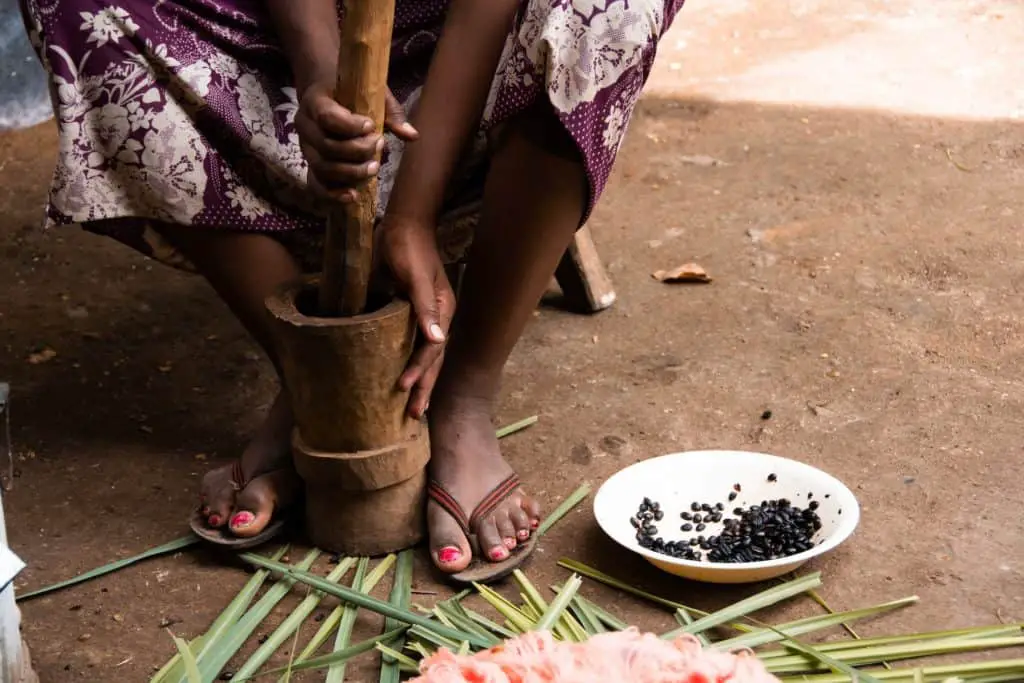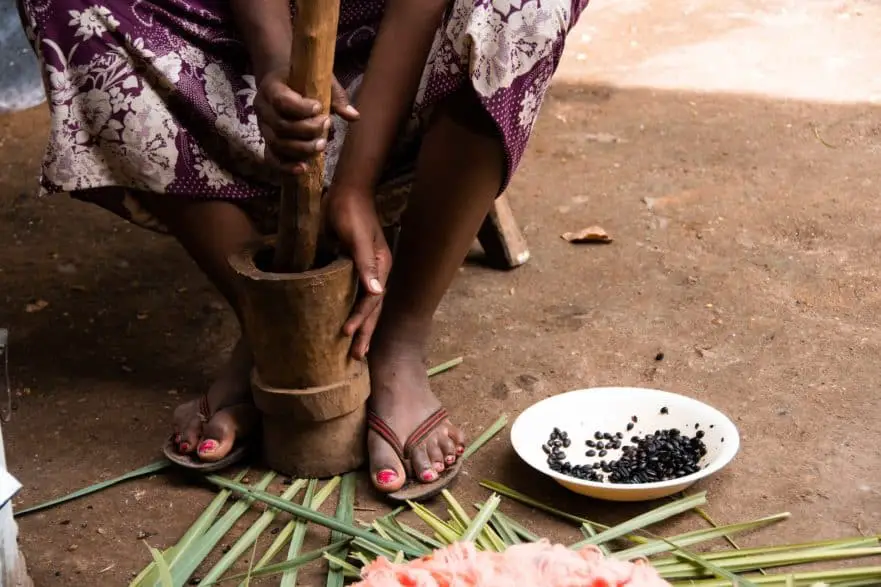
Elaborate coffee ceremonies, or jebena buna in Amharic, are an essential part of everyday life in Ethiopia. They involve the entire family, including children, and can take anywhere from half an hour to two hours. Welcoming relatives or guests with a coffee ceremony is considered a mark of respect, friendship, and hospitality.
The local proverb “buna dabo naw” or “coffee is our bread” shows just how important coffee is for Ethiopians.
Every day, Ethiopians perform several lengthy coffee ceremonies in which raw, unwashed coffee beans are transformed into cups of fragrant coffee.
Let’s see how it’s done from start to finish so you can better understand what an Ethiopian Coffee Ceremony is all about
Setup
The Ethiopian coffee ceremony is usually performed by the youngest woman in the family. The hostess spreads aromatic grasses and flowers on the floor, placing a tray with small ceramic cups called cini on the top. Throughout the ceremony, she keeps burning incense to ward off evil spirits.
The hostess then fills the round-bottomed, black clay coffee pot with a long narrow neck called jebena with water and places it over hot coals.
While the water is boiling, she takes a handful of green coffee beans and places them in a heated pan. She holds the pan over hot coals, stirring and shaking until the husks and debris come off the beans.
Roasting
The woman now slowly roasts the beans, constantly shaking the pan until they start to pop and crackle. She will either roast the beans until they reach a medium brown color or continue until they are blackened and coated with essential oils.
The hostess then goes from guest to guest and lets them take in the aromas of freshly roasted coffee.
Grinding
The whole roasted coffee beans are now ready to be crushed into a coarse ground. To do this, the hostess uses a small wooden bowl called mukecha and a long metal cylinder, zenezena, similar to a mortar and pestle.
Brewing
When the water in the jebena starts boiling, the woman adds the ground coffee and lets it brew for a couple of minutes.
Serving
The coffee is traditionally poured from about a foot above the cups, filling them all without breaking the stream of coffee. This technique prevents coarse grounds from ending up in the cups.
Ethiopian coffee is served with plenty of sugar and sometimes honey, salt, or even butter in Kaffa and Sidamo regions. Fruit, popcorn, sweets, kolo (traditional Ethiopian snacks consisting of a combination of roasted grains), and cakes typically accompany coffee drinking.
Coffee is served three times during the ceremony. Each serving—named abol, tona, and baraka—is weaker than the previous one. The first coffee is said to be for pleasure, the second is hoped to provoke contemplation, and the third is a blessing to those who drink it.

